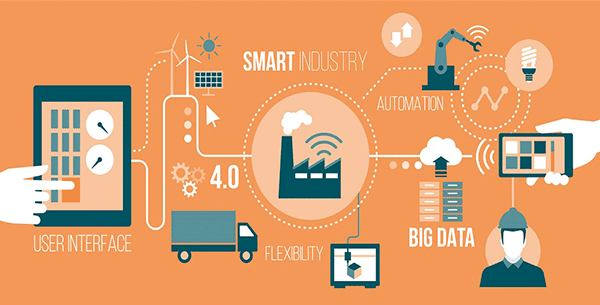Internet of Things: the digitalization of the physical world and total connectivity between people and objects
The Internet of Things (IoT) is the digital interconnection of the objects that surround us through the Internet, which allows us to know the state of these objects, their position, etc.
For this interconnection to work, each object must have identification devices, such as RFDI tags that allow signals to be emitted that communicate with other devices.
For example, if our refrigerator has these devices, you can let us know that we have run out of milk, or in an intelligent packaging of cooked ham, you can warn us that the expiry date is near. Not to mention all the medical or sports applications that a watch can have, that can check our pulse and alert a health centre, or a work chair that tells us to move because we haven't been up for a long time...

What advantages does it have on the Internet of things in the industry?
In the industrial sector, IoT is linked to the so-called Industry 4.0, i.e. one that is already fully interconnected and creates a dynamic production environment.
This absolute connectivity allows the industry to reduce costs, increase process quality and increase reliability. Thanks to these interconnected systems, production does not stop because the entire warehouse, for example, is monitored, as well as the entry of components or raw materials, so that the situation is known at all times.
This knowledge makes it possible to make warehouses more flexible and speeds up manufacturing, while reducing error factors because everything is parameterized and controlled.
In addition, this IoT allows for flexible factories that reduce waiting times for equipment repair or replacement.
We can give examples: The digitized warehouses with all the identified elements allow to have a stock control. The products in transit are perfectly identified and it is possible to know where they are. There is no margin for loss or misplacement of containers or products. There are already applications that monitor the transport fleets and decide autonomously which route is optimal to avoid congestion or to reduce fuel consumption...
In the world of health, there are already applications and devices that alert cardiologists if a patient's heart is fine at more than 1,000 kilometres or if it needs to be checked because it emits signals that reach a control centre.
Traffic control allows drivers to be directed according to the volume of cars in one place or another....
In short, the Internet of things allows us to know the location, the state, the way of consumption of the products, the losses and losses and the itinerary that a merchandise follows.
And this whole concept comes from the mind of Kevin Ashton, a researcher at MIT's Auoto-IDCenter in 1999. Since then it has been a concept that brings together various disciplines and has not stopped developing. In fact, it is estimated that by the year 2020 there will be between 22 and 50 billion interconnected devices.
Having our refrigerator send us an alert... will be part of our daily messages.
Sources:
Wikipedia: The Internet of Things
Muy Interesante Magazine: https://www.muyinteresante.es/curiosidades/preguntas-respuestas/ique-es-el-qinternet-de-las-cosasq
